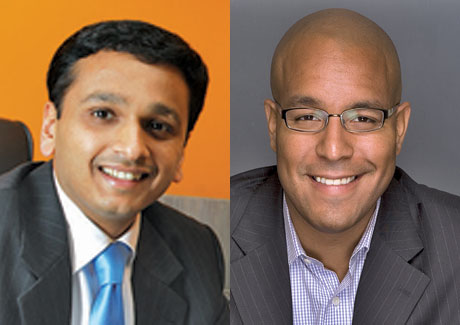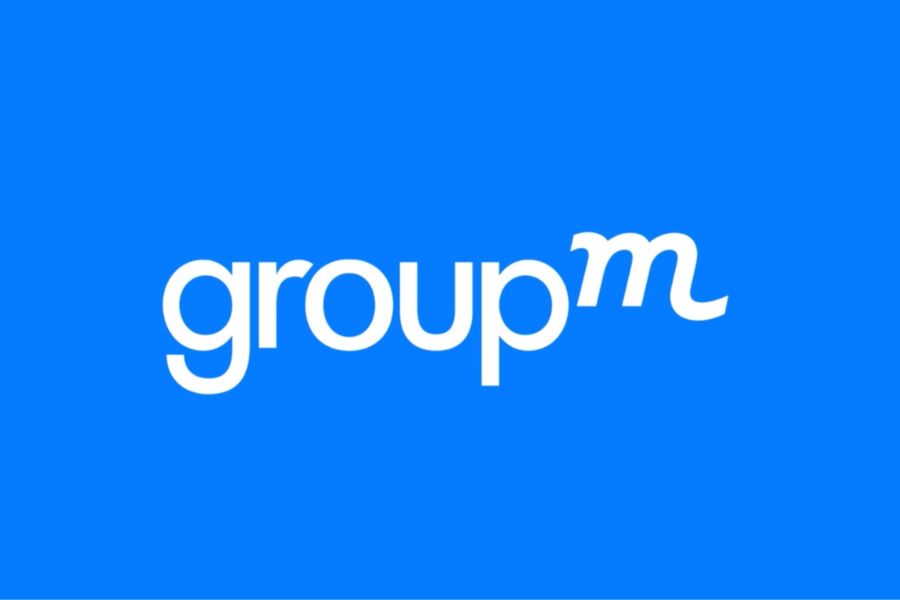History, the factual entertainment channel which debuted its India edition two months back, has garnered 33% market share vis-à-vis Discovery’s 31% and National Geographic’s 13% in the six metro market cluster according to Week 49 TAM media reports. The channel continues to garner the highest time spent per viewer with 40 minutes vis-à-vis Discovery (29 minutes) and National Geographic (16 minutes) among the 15+ audience in the SEC AB markets. In a conversation with Campaign India, B Sai Kumar, group chief executive officer, Network18 Group and Sean Cohen, vice president - international, A+E Networks share their future plans.
On the back of History channel’s launch in India, take us through the partnership between A+E Networks and Network18...
Sean Cohen (SC): At A+E Networks, India has always been a priority. And as long as I have been running the international business over the last five years, the focus for us has been in finding the right opportunity to make a very big play in India. The big part of it, is finding the right partner, right team, right mix and the right proposition in terms of channel and other services.
B Sai Kumar (SK): We set out with a very simple objective in mind. This is a genre (factual entertainment) that has extremely well-entrenched and well-funded players. I understand that every television category that is niche is fully populated. What’s distinct about this genre is the presence of really big global players. So, between A+E Networks and Network18, we realised that if we have to make a mark here, we have to make a serious, aggressive and ambitious entry. And that thought gets personified with what we are doing with the launch of History channel. We knew that we had one shot at the game, and we knew that it is not a 'one channel launch' but launch of multiple channels. Therefore, we knew that there is no choice but to make the first channel – History’s launch a remarkably aggressive one. And that has paid dividends with the channel climbing to the number one spot within three weeks, which is in line with our expectations.
As you mentioned, Discovery has been a big player for the past many years while History has only come into play recently. The marketing campaign would have definitely impacted the increase in viewership during the launch phase. So, how do you see History sustaining the viewership going forward?
SK: I think the Indian viewers are spoilt for choice. Television in India is a mature Industry and Indian consumer has seen the best of content. When I look at viewership, beyond a point I don’t look at reach, I look at time spent. For me, when I sit and watch for five minutes, and then the next week for 10 minutes, and when that number keeps increasing from the same set of audience, that’s the metric that we are most concerned about. That gives us confidence that a certain show is working.
SC: Absolutely, I couldn’t agree more. It is the stickiness. It is one of the most popular ways we measure how channels are getting traction, around the world. Taking a global view on the question, we come in with an expectation that is very much informed by the fact that we have 47 channels in 150 markets in 35 languages today (outside US) and in every market that we operate, we have been the number one, two and three factual channel. So whenever we enter a new market, the lowest expectation we have is to be number three in the market. However, in most markets, we are number one or two. In the US, which many consider to be the leading entertainment market in the world, we are the number one factual channel and among the top five paid TV channel overall. Recently, elsewhere in the world we have achieved number one ranking in the last two years. We are the number one factual channel in Singapore, Japan and Malaysia, which is a testament to the quality of our content right now referring to its accessibility and entertainment value. It’s a tribute to the power, will and efforts of our partner at Network18 and to the team’s ambition that we came in with. In short, we expect to be the driver for this category.
SK: Just to add to that, four years ago, when we realised that we wanted to be a media behemoth in a straddling category like television we looked closely at factual entertainment. Now there are two things that stand out in this genre. One, for the size of viewership it delivers a much disproportionately higher size of advertisers. And two, the size of factual entertainment in markets across the world are in the teens, and in India, they are in the lower singular digits. So therefore one of the key objectives for us here, along with aiming at the leadership position, is to play a big role in taking the genre to the teens in India. It is not enough to be number one; we need to make this genre meaningful and more mainstream. If things go right, and in the next three years, if we grow the genre to 10% or 12% and continue to be leaders there, it would be highly substantial for Network18.
The channel has been launched with international content. When do we see locally produced or acquired content coming on-air in History?
SC: Globally, a big part of our model, for History and other brands, has been local programming. It includes locally produced programs as well as locally relevant programming acquired from the get go. That is the plan here as well. Particularly with genres like History, the mandate is to be very relevant. One cannot come in and offer content that is not locally relevant, and so I think part of how we achieve that is through our will to work with partners.
We do business a little bit differently than our peers around the world, as we seek out partners with great knowledge, great relationships with distributors, advertisers as well as producers. A great knowledge of local content is important to produce that in a significant volume. The commitment for local programming and the commitment to do business, not just in India but elsewhere, within the context of these partnerships, have contributed to a really significant commitment to localisation; and, localisation not in the form of languages, but in the form of having significant amount of locally produced or acquired content.
SK: We will look at localisation within the context of our promise. What is our promise? Our promise is to provide a mix of never seen before history made every day, and programming that can fit in well with the feel and experience of a global benchmark. When you look at programming in History channel, you are looking at programming that was produced with millions of dollars of production. In 60% of our business, we generate content by the second.
We are a live content manufacturing facility with three news channels and two business channels. In our entertainment channels, we are producing content with a six month lag. Now this content that we will generate in this genre comes with a lag of 12 to 18 months and rightly so. For us, we are going to stick to the primary promise of the channel which our consumers are now saying ‘I like’. So our localisation opportunities would: a) be supremely topical, and therefore it could be a short series; or b) something could be mounted on a scale that can fit in the peer group of our existing content shown on-air and people don’t see any quality difference except the context.
History launched with six different language feeds. How has that worked for you?
SK: You need to put down your objectives on the drawing board. Again, we looked at growing the genre from single digits to the early teens. How do you expand the market? You need to get relevant. How do you get relevant? You need to have local languages. In this case, I don’t even want to drill down on whether people are watching Gujarati or Marathi. The overall trend seems to support our gut, and you can only expect us to be launching more very soon. In fact, going for five languages beyond English is one of the key strategic decisions that we took while launching here.
SC: I would just say that the decision that we would go with five plus one is something we are proud of. We realised that in a lot of markets it won’t necessarily make economic sense for quite to speak to viewers in their local language or dialect but we will continue to do that as part of our strategy. Even before we talk about local programming, we need to check the box that says ‘I want to talk to viewers in the language that they want the content in’.
From a global perspective, how different is India compared to the other markets?
SC: With due respect, every market is very different from each other. I would say India is a world in itself – from the size, culture and even the entertainment ecosystem. From our perspective, there is nothing that we can equate to. It is part of why, we are not early to come to India. There is a reason why it took such a long time for us. There are the promises that the market offers, but there are the challenges that it offers which took us a while to figure out. There is no cookie cutter or blueprint available for this market. You really need to look at blank whiteboard and say that I want to be relevant, super big and want to drive the category, and then you need a different game-plan to get there.
SK: I would just borrow from what Sean said. Contrary to popular perceptions, I think we Indian professionals are just discovering and learning new facets of the Indian market. And to an extent, being a bit distant, I think he gets it. Let’s look at regional. Each little region is a country on its own. Not because there is a federal state, but it is a market. And when did we discover that? Three years back. The buzz word in the market is ‘What are you doing in regional?’ What does that mean? So, History going six languages is actually a surrogate of going regional. What I am saying is that at the first stage, being number one and increasing the genre, etc. all that is great. But the first precious milestone is to register your identity to the customer. Then the customer will welcome you in various formats. The brand has to get established in the 600 channel television market, and then the opportunities are a million for a brand like History or a venture like AETN-18.
Following the launch, going forward, what are the roadmaps that you have in front of you?
SK: That’s where the network starts playing a role. Whether to market the brand or increase the penetration, it is easier when you have the support of a network with strong brands. A year back, when we did a study with TAM Media Research, we realised that the overlap of factual entertainment audiences with all the leading networks across the country, the largest overlap was with Network18. I think that gives us a few ideas of saying that if CNBC is doing well in Gujarat and Colors is going to be doing well somewhere, we at History will be looking at that very closely because we can piggyback. That’s part one. And, part two is, how you address these markets that functions so differently. At some stage, we will listen to what a person watching History sliced in Marathi against a person sitting in Pune sliced in Hindi versus a person sliced in English. Now that market data that something others will have and do not have access to.
SC: I would want to talk about the partnership with Network18 as the key here. In the US, we operate more than ten pay TV channels and, among that we have three out of the top five channels. Around the world, we are always about operating more than one channel in a market. Part of why we do that is because it helps us in having the clout and offer different kinds of segments to our viewers. In terms of strength, reach and remind viewers of the offering, it is very important to be part of a strong network. So, we are able to marshal the energy and reach of the group and take advantage of it here in India as well. Going forward, our plan is not to be only one channel. Like in the US or elsewhere for A+E Networks, we want to have three or four channels and offer SD, HD and who knows when even 3D and digital content in the coming years.
Everyone is talking about a global economic slowdown. How does that affect your expansion plans?
SC: Globally, we are happy to say that while we are looking at growing the business and expand our markets from a long-term perspective, and the global economic slowdown has not impacted us at all. The will to invest, to grow our channel portfolios beyond the 48 channels, if anything, the slowdown is looked at by our management as an opportunity to double up - to double our investments. We did that the last time, in 2008-09 when there was a slowdown.
So, what are the milestones that you want to achieve before you announce the launch of other channels?
SK: We all know we are in business. But we also understand that any leadership move came from looking only at the excel sheets. We all know that you may lag for a couple of months, but leadership can always be monetised. So I would think that the acceptability of our brands and the leadership position would dictate our forthcoming launches.
SC: I would agree to this. We are not in this for the short haul. I think both of us are committed to looking at success not on a one or two year perspective, but longer.




